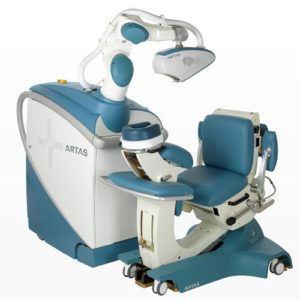Restoration Robotics, Inc is a medical device company dedicated to hair restoration. The company produces the ARTAS System, the first computer-assisted robotic system used to harvest follicular units directly from the patient's scalp. Recently, the company has been in hot-water and subject to a class-action lawsuit. In this article, we will be discussing the denial of their motion to dismiss the class-action lawsuit.
Why Are Restoration Robotics, Inc Being Sued?
Restoration Robotics, Inc commenced the companies initial public offering (IPO) on October 12, 2017, and closed on October 16, 2017. The lawsuit was filed to cover alleged damages caused by defendants (Restoration Robotics, Inc). The class-action lawsuit claims that Restoration Robotics, Inc was not equipped with an adequate salesforce to grow the company and business. The plaintiffs claim that the company misrepresented its salesforce and provided no marketing support.
Partial Dismissal
The court rejected the plaintiff's argument that the defendants provided inadequate marketing support because they failed to deliver patient leads, as promised. The court found that the defendants made no representations as to the quality or quantity of leads. Regarding statements that physicians would be able to perform surgery with less staff, the court rejected this plea, because the comments were technically correct. The court also rejected the request that the procedure-based revenue failed to grow. The court noted that the defendants explicitly stated they could not predict the success, and even predicted loss of funds.
Court Finds Alleged Misrepresentations
The court did find alleged misrepresentations concerning the devices "targeted precision and a cleanly scored incision" and the defendants "aggregate installed base growth of approximately 34%, from December 31, 2015." The court found that the plaintiff had sufficiently laid out enough facts to conclude the first statement of so-called targeted precision and clean scored incisions was inaccurate, based on an alleged statement from a confidential witness.
The second alleged statement, plaintiffs argued that defendants misrepresented the number of systems that were actually 'installed' rather than 'sold'; the court agreed that the account could be misleading. The court found that the plaintiff had adequately pled claims under sections 11 and 15 of the Securities Act against defendants based on just two alleged misstatements. However, the judge dismissed the rest of the pleas.
Our Thoughts
Under all of the legal jargon, there is a big takeaway. The judge agreed that claims of targeted precision and clean scored incisions were a misrepresentation. This misrepresentation speaks volumes for prospective patients. Currently, the best hair transplant surgeons perform Follicular Unit Extraction (FUE) manually or with a mobile hand-held device. Now, that doesn't mean that it is impossible to have quality results with the ARTAS System. Still, the vast majority of surgeons who purchase this device are inexperienced in the field of surgical hair restoration. The physician must control this system, but in most cases, technicians control them.

